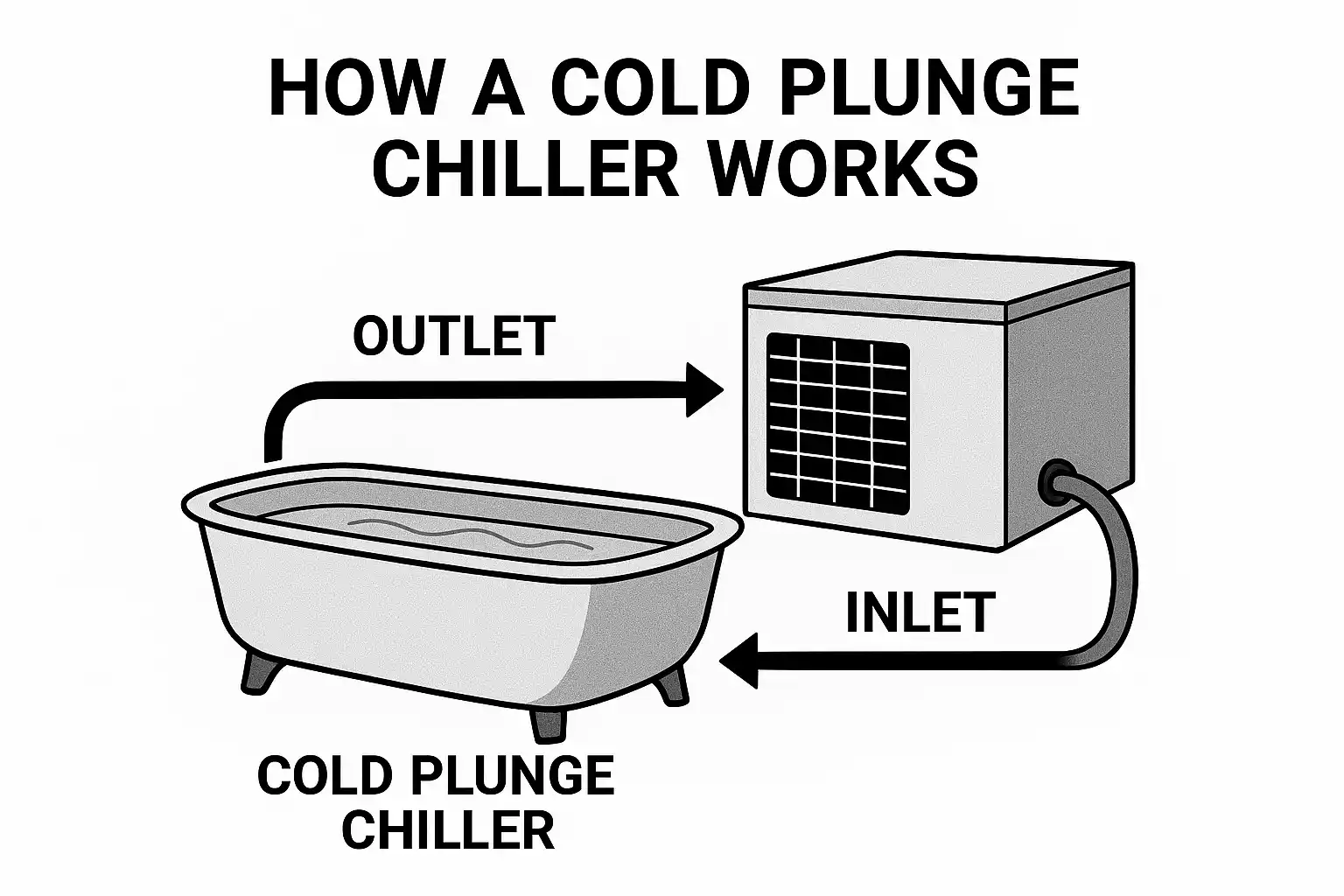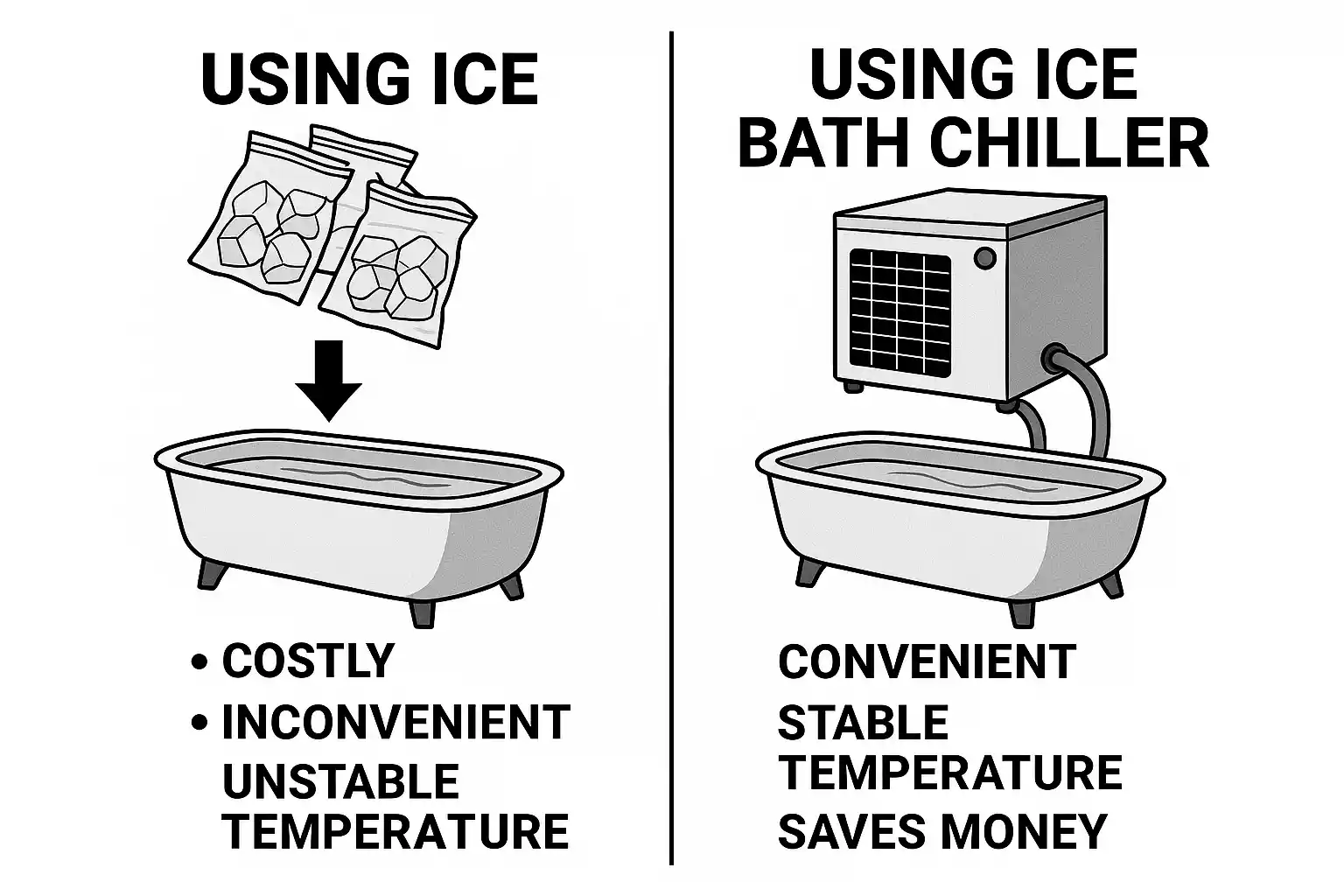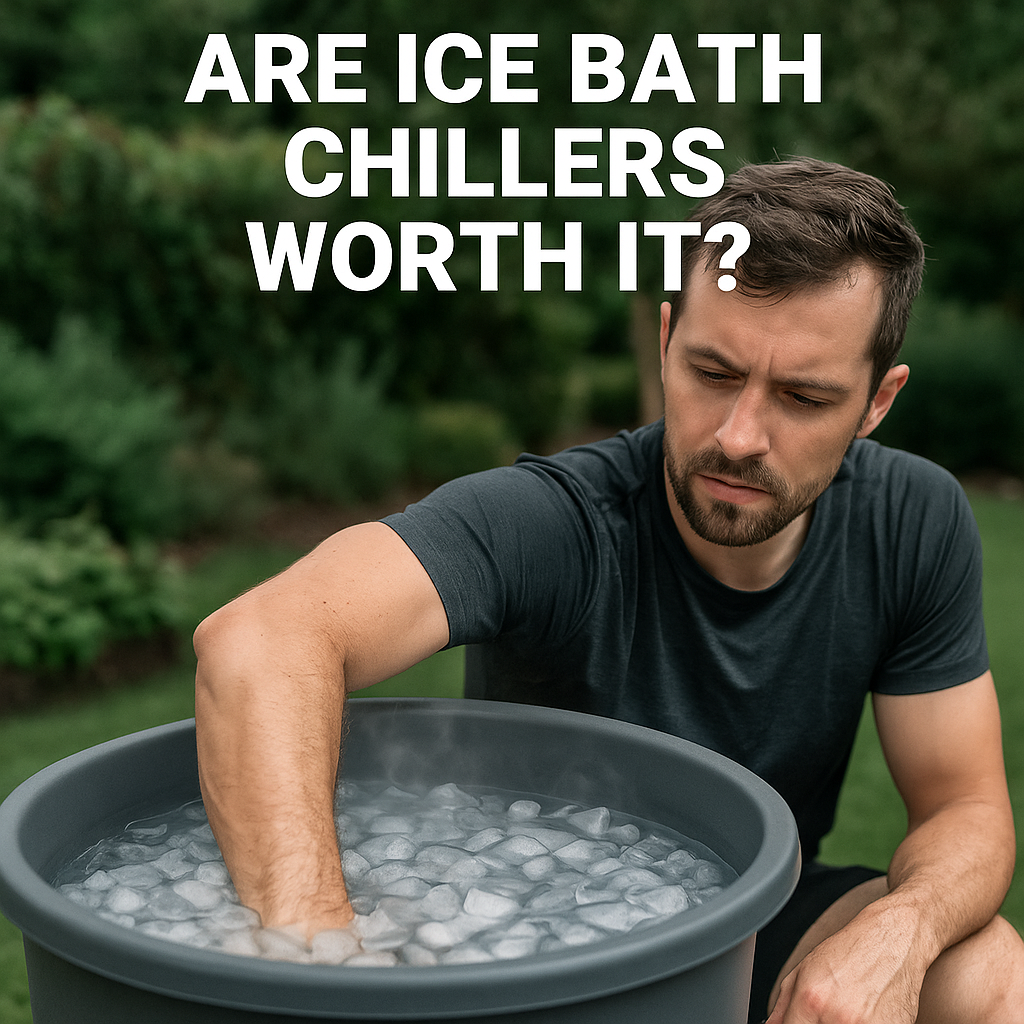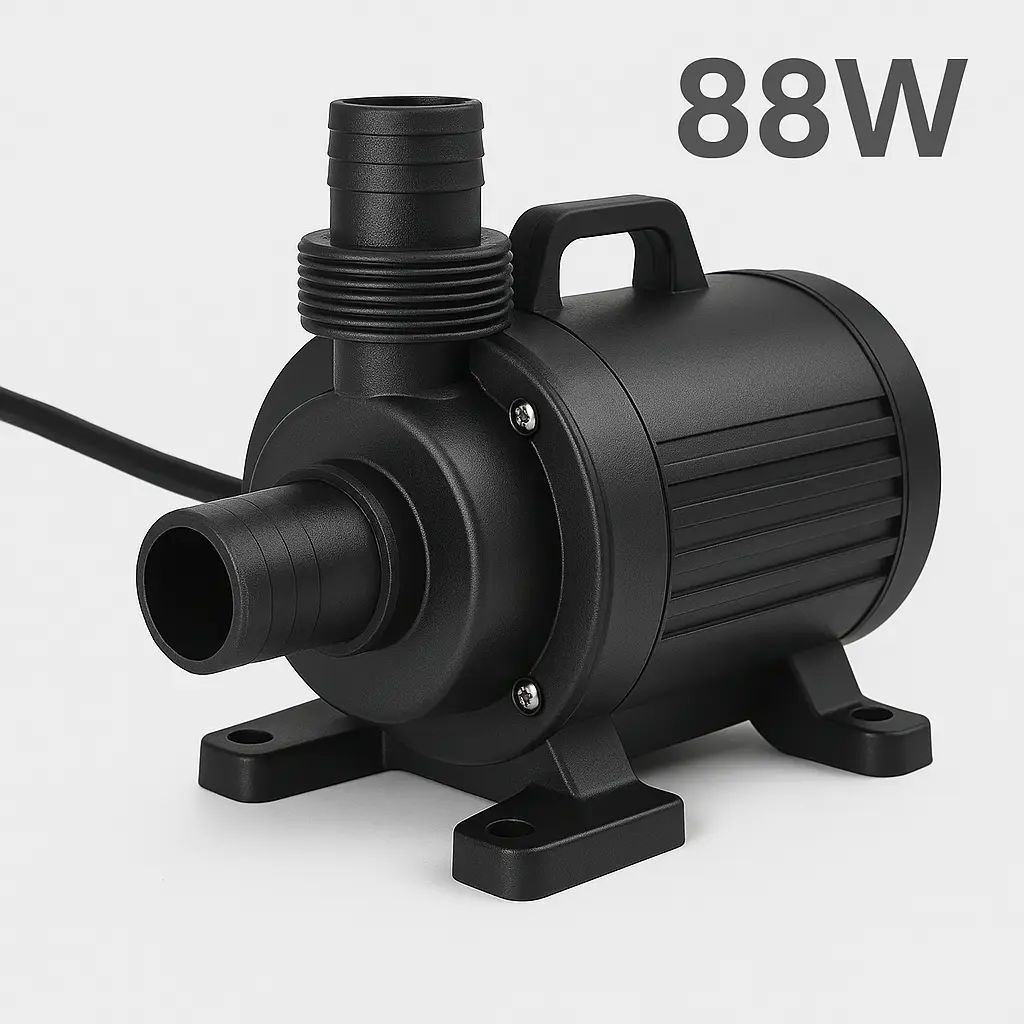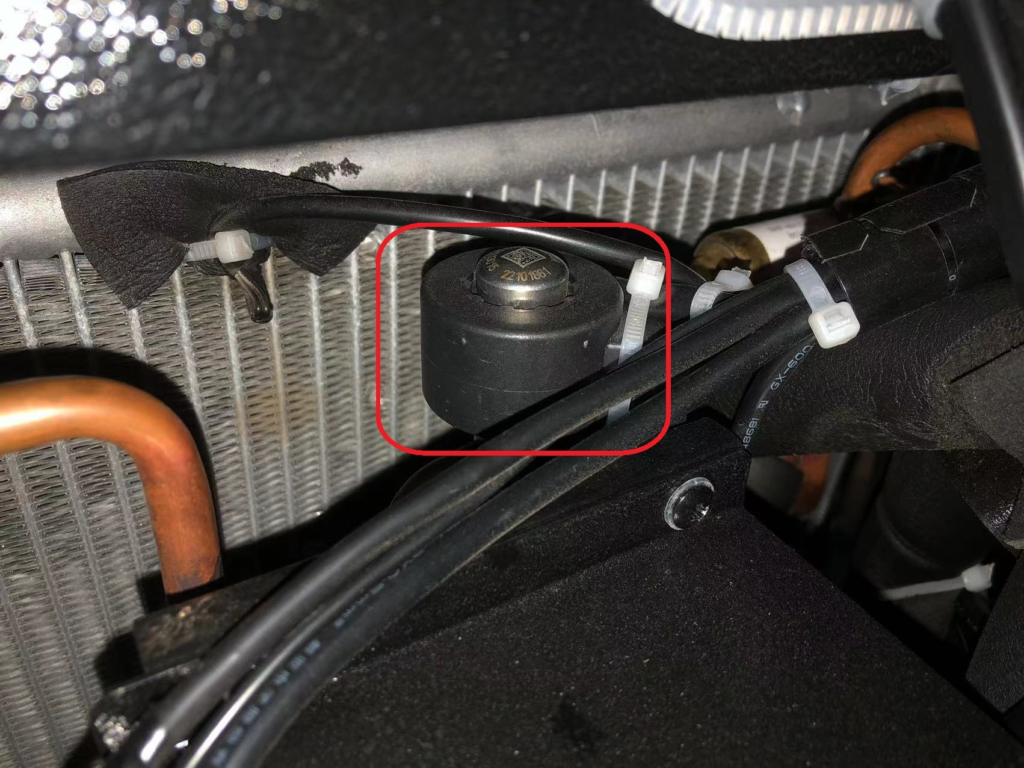Why Keeping Ice Bath Water Cold Really Matters
Cold plunges are only effective when the water stays consistently near freezing temperatures (0–5°C / 32–41°F). At this range, you get maximum benefits: reduced muscle inflammation, faster recovery, improved blood circulation, and enhanced mental resilience.
👉 According to the Cleveland Clinic, cold immersion within this range is where most recovery benefits occur.
If your water warms up quickly, you lose most of these benefits. A bath at 10–12°C might feel refreshing, but it won’t trigger the same physiological response as a true cold plunge. That’s why it’s critical to understand how to keep ice bath water cold for the entire session.
👉 For a detailed breakdown of equipment, check our main guide: Best Cold Plunge Chiller.
Traditional Methods: Using Ice to Keep Your Bath Cold
Ice Bags and Blocks
The most common way is simply adding ice. For a standard 280–300L (≈75–80 gal) tub, you’ll need around 40–60 kg (88–130 lbs) of ice just to reach 5–10°C. To push it lower (0–3°C), you may need double that amount.
Cost: $10–20 per session → $300–500 per month
Convenience: You need to buy and transport ice every time
Consistency: Water warms up after 15–20 minutes
👉 Ice works if you plunge occasionally, but it’s not a long-term solution.
Frozen Bottles
Reusable frozen bottles are slightly more eco-friendly, but:
They take up freezer space
Cooling is slow and uneven
You need dozens of bottles for one tub
Dry Ice
While very cold, dry ice is dangerous and not recommended. It releases CO₂ gas and can cause skin burns.
DIY Cooling Hacks (and Their Limitations)
Some enthusiasts have tried creative methods:
Chest Freezer Conversion: Insulate a chest freezer, fill with water, and use as a plunge. Risky because of electrical hazards and hygiene issues.
Aquarium or Beer Chillers: These small chillers are designed for tanks, not for hundreds of liters of water. Cooling is weak and slow.
Shading & Insulation: Keeping tubs in the shade or using insulated tubs helps reduce heat gain, but it only slows warming—it doesn’t actively chill water.
👉 These methods may work for beginners, but they cannot compete with a dedicated ice bath water chiller.
The Modern Solution: Ice Bath Water Chillers
A water chiller is the most reliable way to keep ice bath water cold at 0–3°C.
How They Work
A pump circulates water from your tub through the chiller
The chiller actively cools it down to your set temperature
Filtration systems keep the water clean and safe
Why They’re Better Than Ice
Stable cooling: Maintains water at your target temp for hours/days
Cost-effective: One-time purchase + low electricity vs endless ice costs
Hygienic: Built-in filters and sanitization options
Scalable: From home tubs to commercial spas
👉 See models here: Cold Plunge Chiller
Ice vs Water Chiller: Which Keeps Water Colder for Longer?
| Factor | Ice Bags | Water Chiller |
|---|---|---|
| Initial Cost | Low ($20) | Higher ($1,000–3,000) |
| Monthly Cost | $300–600 | $10–20 (electricity) |
| Temp Stability | Inconsistent (10–15°C) | Stable (0–3°C) |
| Convenience | Time-consuming | Plug-and-play |
| Hygiene | Melting, messy water | Filtered, clean water |
| Best For | Beginners, rare use | Athletes, wellness centers |
👉 For horsepower matching, read: What Size Water Chiller for Ice Bath Do You Need?
Choosing the Right Cooling Option for Your Tub
Home Use (250–350L / 66–92 gal)
Best with 1–1.5HP chiller
Reaches 0–3°C in a few hours
Great balance between cost and performance
Commercial Use (350–500L / 92–132 gal)
Requires 2HP or higher
Faster cooling, built for multiple users daily
Essential for gyms, spas, and recovery centers
👉 Need a full setup? Explore our Plunge Cold Tub Factory.
Extra Tips to Keep Ice Bath Water Colder for Longer
Location matters: Place tubs indoors or shaded areas
Insulation: Use insulated plunge tubs or add a cover
Circulation: Chillers keep water moving, preventing warm layers
Water Volume: For home use, 280–300L is enough; too much water = slower cooling
Filtration: Prevents bacteria growth and keeps water clean longer
Real-World Case Studies
Home User (USA): Used ice for 3 months ($1,000+ spent), switched to 1.5HP chiller → saved money, got stable 0–2°C plunges daily.
Gym Owner (UK): Installed 2HP chillers for 400L tubs. Now supports 20–30 plunges/day, water stays crystal clear.
Wellness Center (Asia): Combined chillers with UV filters. Costs dropped by 60%, customer satisfaction increased.
Extended FAQs
Q: How long does ice keep water cold?
Usually 15–30 minutes, depending on amount and weather.
Q: Can aquarium chillers work for ice baths?
Not effectively. They’re too small for large tubs.
Q: What’s the fastest way to cool a tub without ice?
A properly sized chiller can drop 300L water to 3°C in 3–4 hours.
Q: Do chillers keep water at 0°C?
Yes, modern models can maintain water at 0°C consistently.
Q: How often should I replace ice bath water?
With a chiller + filter: every 2–3 weeks (home use)
Without filtration: every few days
Conclusion
If you want consistent and effective cold plunge therapy, you must know how to keep ice bath water cold.
Ice is fine for occasional dips but expensive and inconsistent. DIY hacks may help, but they lack stability and safety. The best long-term solution is a dedicated water chiller, matched to your tub size and usage.
Learn more in our detailed guide: Best Cold Plunge Chiller.
For equipment options, see our Cold Plunge Chiller.
If you need a complete setup, explore our Plunge Cold Tub Factory, or visit the ColdTubChiller Manufacturer homepage.

